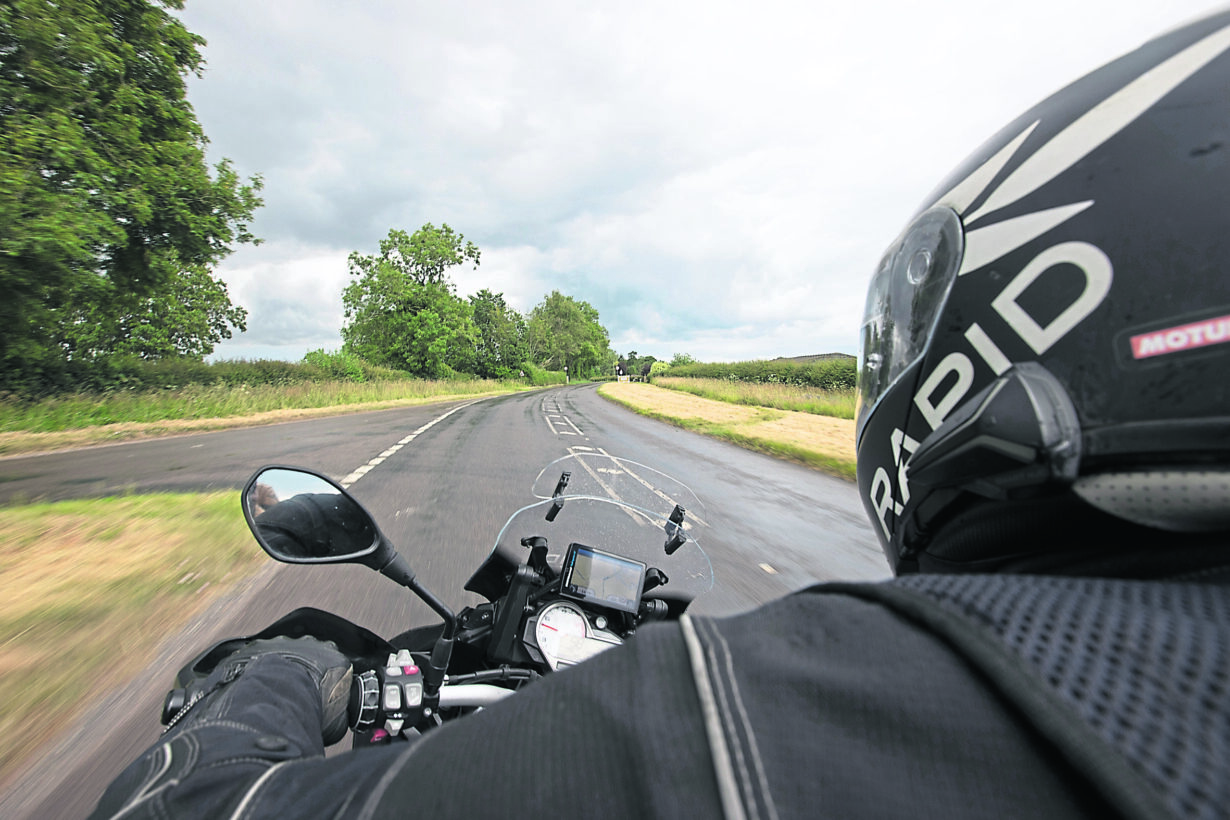Mastering the perfect arc takes some practice. To help make it easier, we’ve asked the experts to share some of their hard-won wisdom.
Sort your lines
The classic racing line turns in early, apexes around the midpoint of the bend, and uses the full width of the road (or track) on exit. In theory, it’s the quickest way around a corner because it carves the biggest possible arc. But in practice it’s usually a very bad idea.
Enjoy everything MSL by reading the monthly magazine, Subscribe here.
For a start, most real roads are lined with hedges, trees and walls, so if you take a racing line you’ll have to turn in before you can see the exit – you can’t just look across the corner like racers do at Silverstone. This means you’re gambling on a) the exit not tightening up and b) there isn’t a broken-down combine harvester plonked on it.

Far better is the late apex line. The idea is that you go into the corner slightly slower, and stick to the outside until you see the exit. If it’s clear, you then turn the bike quickly (which is easier to do because of your lower speed) until the bike is pointing at the exit, then lift the bike up and deploy all that horsepower you paid for.
Because of the lower entry speed, you might imagine the late apex line is slower than the classic racing line, but it definitely isn’t. A classic racing line will gain a couple of bike lengths on corner entry, a late apex will easily pull 10 bike lengths on the exit.
Steer faster
How you steer has a big impact on the amount of speed you can carry into, through, and out of a corner. If you steer slowly, the bike takes a long time to go from being upright to banked over, so you can easily run wide. This forces you to either slow down or lean even further to compensate. Crisp, precise steering is the remedy.
Most people have heard of counter steering (i.e., push left to go left, push right to go right), but Rapid found that their BSB racers and elite coaches used a more sophisticated version of the technique. Firstly, they give the inside bar a firm, crisp push, not a long, gentle one. Secondly, they only use one input per corner rather than multiple adjustments. And finally, after the single push, they relax their grip and let the bike carve round the corner. Rapid call the technique Precision Steering because that’s the effect it has.
The most common counter-steering error is the push direction. If you push down on the bar nothing will happen – no matter how hard you try. But if you apply a tiny amount of forward pressure on the bar, the bike will turn sharply.
Use your throttle
The throttle can have a huge effect on how fast and safely you can ride through corners. At Rapid we like to split its influence into three phases:
A) Corner entry. In an easy, rolling bend it’s often best to keep the throttle rolled on here to balance traction between the tyres, limit weight transfer, settle the suspension in its sweet spot, and maintain maximum ground clearance. But in a more challenging corner, it’s usually better to enter the corner with the throttle off. This increases traction on the front tyre at the point when a steering input is made, and improves the steering geometry so the bike is easier to steer.
B) Mid corner. This is almost always best handled on a positive throttle. This means you open the throttle just enough to maintain speed. Be careful not to be aggressive though.
C) Corner exit. As soon as you can see the corner opening up, you can begin a steady throttle roll-on, and at the point you can see some distance down the road, you can optimise performance by timing your roll-on with standing the bike up.

Look in the right place
Great riders can see and interpret far more detail much earlier than novices, and at far higher speeds. This allows them much more time and space to react and effortlessly handle whatever comes their way. It might look like a freakish talent when you’re trying to keep up with a faster rider, but it’s most definitely not – these visual skills can be learned.
The first thing to improve is your observation – keep your eyes up and try looking further ahead than you usually do. Try and see more detail – by consciously noting exactly what you see, you can force yourself to be more attentive. So instead of just seeing a corner, you see a right-hander under some trees with a van approaching from the other direction.
Once your observation is on point, you need to interpret it. The easiest way to improve this is to apply the ‘so what?’ test. Say you see an adverse camber. So what? It could affect your traction and throw you off line. You see an empty side road before the corner. So what? A car might arrive as you approach and are past the point of no return.
Once you’ve done all that, you can then move on to the next phase.

Make plans
Planning means deciding where to position the bike, what speed to go, and what gear to be in. Also you might need to consider what signal to give other road users, and when. In real-world corners, we’re often juggling position, speed and gear relative to multiple, simultaneous hazards, and making decisions based on our view of the best balance between them. This is where complexity creeps in and why we can’t ride by a simple formula.
So we might need to compromise our view in a right-hand corner and move to a more central position to stay clear of a pothole, for example. The truth is, no two bends are the same, and even if they were, no two rides through them would be the same. Planning decisions are dynamic and complex involving trade-offs and prioritisation. And the faster we ride, the faster they have to be made, and the more important it becomes to get them right. The key is to make small steps and keep practising. By the end of the summer you’ll be amazed how much faster, safer and more confident you are.
Our experts: Rapid Training
Who are Rapid Training?
Back in 1997, a group of ex-racers who had become police motorcyclists decided that rider development needed a fresh approach. Their heritage gave them a unique perspective on how to help riders unleash their full potential. They evolved their own, relaxed, no-nonsense approach to coaching – no formality, no student bibs, just passionate riders being coached by the most highly qualified professionals in the business. And so Rapid Training was born.
That ethos is still the same today. Now with over 25 years of experience – plus their own British Superbike Racing team and the most highly qualified coaches in the business – Rapid offer the most comprehensive rider development programmes available.
If you want the most effective rider coaching available, go to rapidtraining.co.uk.






